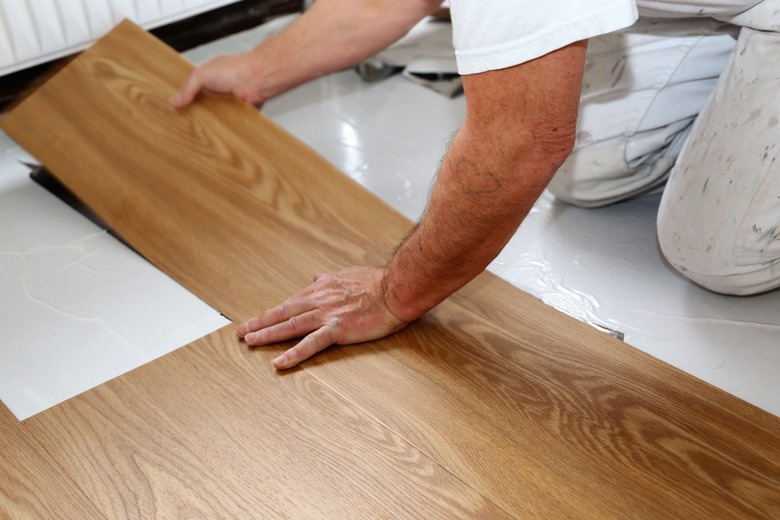How To Secure Vinyl Floor Tile That Is Not Sticking
The beauty of vinyl floor tiles is that you can peel and stick them for easy installation. But what happens when those stick-on tiles don't stay stuck? It may be an issue with your vinyl title installation process or you may need a little help from extra adhesive to keep those tiles in place.
Vinyl Tile Installation Basics
Vinyl Tile Installation Basics
Usually, vinyl floor tiles have a peel-and-stick style installation. They're already covered with an adhesive that's usually strong enough to keep them in place. Paper backing covers the tile adhesive until you're ready to install. Once you figure out your layout, you peel the backing of one tile at a time, and press it onto the floor.
Problems With Tiles
Problems With Tiles
So what goes wrong when vinyl tiles don't stick? It could be a problem with the environment or the installation. Let's start with the underlayment for vinyl tile. You can put peel-and-stick tiles over most existing flooring surfaces or underlayments as long as the surface is flat, level and dry. If it's not, the tiles might crack or pop up. Leveling compound can help give the floor a level surface and cover up any gaps or cracks in the existing flooring.
Other issues can be the tiles themselves or the environment. Vinyl expands and contracts as the temperature changes. If you bring tiles from your cold garage into your warm home and install them right away, you may have some issues with shifting. Bring the tiles into the space where they'll be installed at least 48 hours before you start work to let them acclimate to the surroundings.
Always read the instructions for your specific product. Many vinyl flooring products specify an installation temperature range. If you install the tiles when it's too hot or too cold in your room, it may interfere with how well the tiles stick to the floor. It's also important to have a dry, clean floor when you start working. Sweep and clean the floor thoroughly before you start installing. Any little pieces of dirt or debris come between the subfloor and the adhesive, which can affect the strength of the adhesive. Let the floor dry completely before you start the tile installation.
Vinyl tiles stick well with a strong bond. That requires plenty of pressure pushing the tile down onto the floor below. If you install the tiles quickly without pressing them down firmly, they might not bond well. You can use a floor roller to help get a strong bond. You also want to be careful when kneeling on the tiles you just installed. The tiles may slip or shift, which can cause a corner to pop up. Lay plywood over the tiles to kneel on to help disperse your weight and avoid shifting tiles.
Getting Vinyl Tiles to Stick
Getting Vinyl Tiles to Stick
If you're just starting your installation and find the tiles aren't sticking, stop working to make sure you've followed all instructions and have an ideal working environment. It's always a good idea to put down a few test tiles and wait an hour or so when you're starting a new tile project. This way you can make sure the adhesive is working well. You may need to make adjustments, such as using a leveling compound or fixing damage to the existing floor. You may also need to wait until the temperature is right in the space.
Still having issues with the tiles sticking? Even though vinyl tiles have a peel-and-stick backing, you can use a separate adhesive to help them stick. Choose an adhesive designed specifically for vinyl to make sure it works well. Apply the adhesive according to the package instructions and only in areas where the tiles aren't sticking. Avoid applying too much adhesive, as it will squeeze up where the tiles meet and cause a sticky mess on top of your new flooring. Clean up any adhesive that does ooze onto the floor right away.
If your vinyl tile installation hits some bumps, look at the conditions to make sure they're ideal for sticking. Add a little adhesive to correct the issue if the tiles are still popping off the floor.
